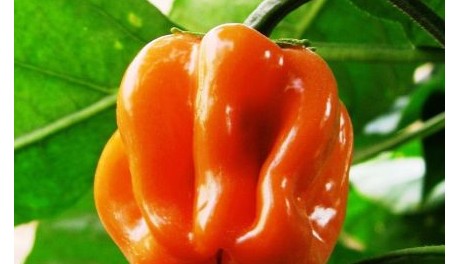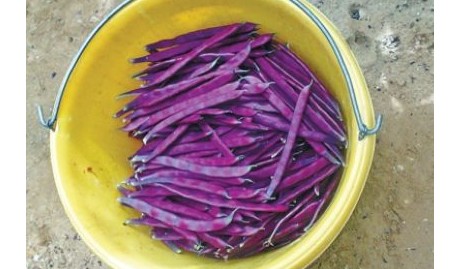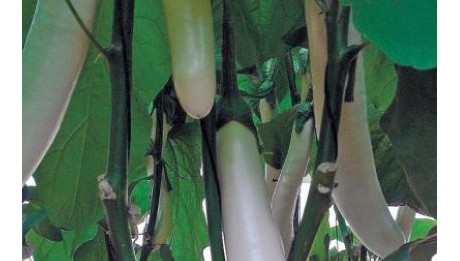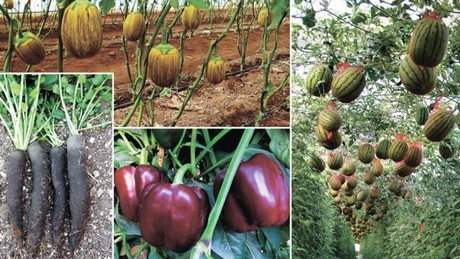Black tomatoes, banana-yellow eggplant and purple beans are just some of the agricultural innovations that will be on display Wednesday and Thursday at the Arava Open Day Agricultural Exhibition near Moshav Hatzeva.
Floating mini-watermelons, yellow eggplants, chocolate-colored bell peppers and black radishes.
The exhibition will also feature personal-size watermelons, seedless bell peppers and hot peppers from Mexico. The purpose of these new varieties, with their unusual appearance and higher nutritional value, is to enable Israeli farmers to better compete in the world market as the global health trend grows stronger.

The good news is that these new fruits and vegetables are in demand at chef’s restaurants, niche markets – such as the Tel Aviv Farmers Market at the Tel Aviv Port, and supermarkets abroad. The not-so-good news is that they are more expensive than their more commonly available counterparts. So if wholesalers are not found here to sign at least year-long deals with farmers, we won’t be seeing any of this special produce in the large supermarket chains in Israel.
"To compete in the world market, you have to innovate in color and nutritional value,” says Alon Gadiel, the research manager for Central and Northern Arava Research and Development, which is hosting the exhibition at its Yair Station. “The new produce is richer in anti-oxidants and vitamins than the existing produce. It tastes better and looks unique, so its cost and agricultural profit are higher.” He adds, “The prices farmers can get abroad – in the United Kingdom, for example – are four times higher than the average prices in Israel for similar produce. This means they’ll have a tougher time selling it at a price that earns a profit, so they’ll choose to sell them abroad.”

The Arava center is part of a network of eight R&D centers on Israel’s periphery. The network is supported by the Jewish National Fund, the Agriculture Ministry, the World Zionist Organization’s Settlement Division, the Ministry for the Development of the Negev and Galilee, the Plants Production and Marketing Board and private foundations. The Arava center’s R&D budget, which is shared by the Central Arava Regional Council and the Tamar Regional Council near the Dead Sea), is NIS 7.5 million per year.
The Arava Open Day Agricultural Exhibition is for farmers from all over the country and buyers who are interested in learning about the new produce.
Unlike typical watermelon, which is grown in the soil, dwarf watermelon is grown above ground. It ripens in winter, not in summer, making it somewhat unique in the Western world. It is also fairly small, weighing only 2.5 to three kilograms. At a certain stage in the cultivation, the watermelons are supported by nets to keep them from falling.

The new eggplant varieties have their own quirks. One variety features low oil adsorption – in other words, less oil sticks to it during frying, which results in a higher nutritional value. Another variety is seedless, making it easier to deal with and more profitable. Seeds, which make eggplant bitter, are considered inappropriate for serving in high-end restaurants. In Israel, eggplants can be as much as half comprised of seeds – but not so the news ones. “With their new texture and appearance, these eggplants are intended mainly for export and for chef’s restaurants,” Gadiel said.
The eggplants’ idiosyncrasies aren’t just beneath the skin either. There is a purple eggplant, a white eggplant that is thin and long (up to 40 centimeters) with low oil adsorption, an orange-striped eggplant and a round eggplant reminiscent of a pumpkin. The Star of the South eggplant, which originates in Italy, is round, fleshy and purple, with a white, star-shaped corolla. It has a rich taste, few seeds and extremely low oil adsorption. The seedless variety does not need to be sprayed with hormones while growing, which evidently makes it tastier, and is exported mainly to Europe.

A newcomer to the gourmet plate will be purple beans – the only such variety in the world – which were developed by a farmer from Neot Hakikar in the Tamar Regional Council. According to Gadiel, the purple beans, which have a higher nutritional value than yellow or green varieties, are destined for the farmers’ markets at the Tel Aviv Port and in Be’er Sheva. Purple beans are also unique among their bean brethren in that they can be eaten raw and have no fibers.
The chocolate-colored cherry tomato will be joined this year by a chocolate-colored bell pepper. Adding to the array of dark colors will be black radishes and black tomatoes produced by Seeds Technologies. Industry sources say these varieties are in demand in high-end restaurants and niche markets worldwide. In all these cases, the dark color is produced during cultivation by adding a pigment found in blueberries.
Peppers are hot this year, with new varieties arriving from Mexico. These will include the habanero pepper, which is considered one of the world’s hottest foods, and the ancho (dried poblano), which also brings the heat. Both arrived at the request of several Israeli chefs. A longer, seedless variety of pepper, available in red and green, will be exhibited alongside them. Attempts are under way to cultivate a smaller version of this variety, which has won international prizes, designed to be eaten as a snack.
There will also be irrigation systems at this year’s exhibition, including two systems for growing potted vegetables on apartment balconies. The Autoagronom company in Israel will be exhibiting an irrigation system that uses sensors to detect the amount of fertilizer and water around a plant’s roots. The sensors then coordinate fertilization and watering with the plant’s needs.





